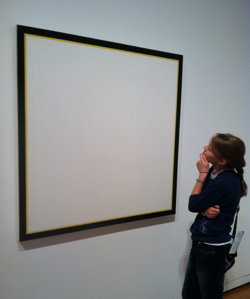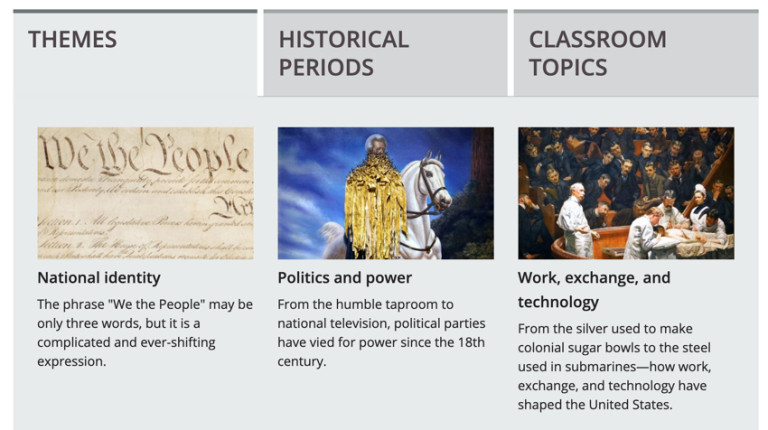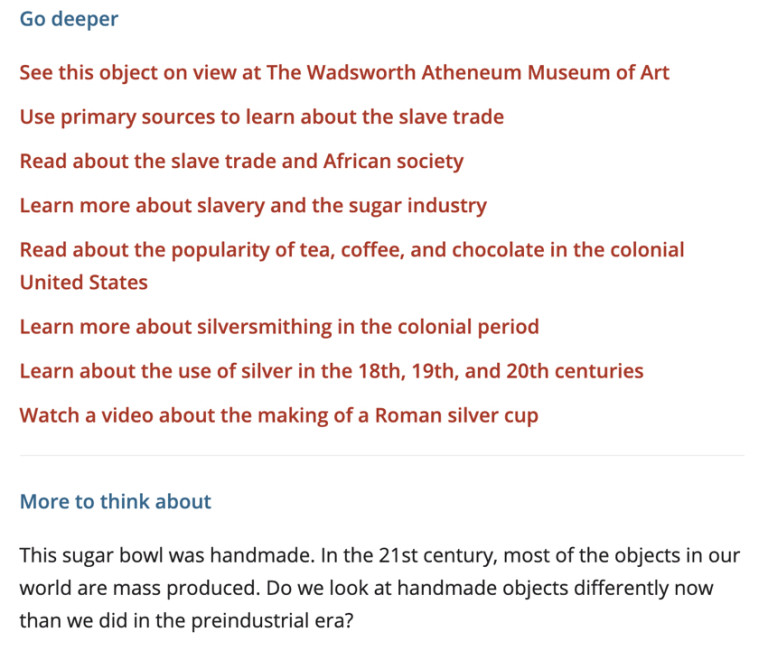Holy Artwork, Batman! Teachers Should be Using #SeeingAmerica and SmartHistory!
There are tons of things to explore at Smarthistory.

Art is hard. It’s not that I don’t like it. It’s that sometimes I just don’t get it. Maybe it’s modern art that causes me trouble. Maybe I’m just too literal. The piece to the left hanging in Seattle’s art museum? I got nothing.
But with the help of an older sister and a daughter, both strong with the art force, I’ve gotten better at making sense of color, shape, perspective, of context and hidden messages. And with the help of a lot of bright people at places like the Smithsonian and Library of Congress, I’m also getting better at looking at art as a form of primary source information, as another way to understand place and time,
For the last few months, I’ve been highlighting the very cool way that teachers are using Norman Rockwell’s Four Freedoms to help students think about the Bill of Rights and contemporary issues. I love using interpretations of the Boston Massacre by Paul Revere and Alonzo Chappel to talk about historical accuracy and encourage historical thinking. The National Portrait Gallery has been huge in showing me ways that we can use portraits such as the Lansdowne image of George Washington by Gilbert Stuart and John Brown in his US Army blanket by Ole Peter Hansen Balling. And who hasn’t used images such as John Gast’s American Progress to lead conversations about Manifest Destiny and the interactions between settlers and American Indians?
But I’m starting to believe even more in the power of artwork as story and primary source. So it’s always great to find another site and set of tools that help integrate art into instruction and learning. I recently ran across SmartHistory and am loving it.
Smarthistory believes that:
art has the power to transform lives and build understanding across cultures. We believe that the brilliant histories of art belong to everyone, no matter their background.
Art connects us to the world; it allows us to imagine, to create, to build and to inspire, and it shouldn’t be locked up in a textbook. Smarthistory takes you inside museums and outside to ancient temples and brings you into conversations about how to interpret and understand the images you’re seeing.
Tools and ideas to transform education. Sign up below.
Now more than ever we need understanding, rigorous analysis, and nuance, and art teaches the critical thinking needed to better comprehend current events and their cultural and historical context.
Smarthistory is the window through which to learn about today’s biggest clash points: we interrogate faith, class, race, gender, and power through a study of art and objects from ancient times until the present. We help learners navigate their world by teaching the skills of interpretation and judgement to help them make meaning of the world around them.
If that doesn’t define our job as social studies teachers, I’m not sure what does.
There are tons of things to explore at Smarthistory. Jump right into in-depth explorations of different time periods found on the home page or hover over the Guides tab to jump straight into serious art history.
But be sure to save some time for exploring their Seeing America section, what Smarthistory calls a “portal to American history and art that examines the long history of the United States, from before European settlers to the modern era.” They do this by making “key works of art accessible for the U.S. history and social studies student.”
You’ll find lessons and suggested activities organized by broad themes, historical periods, or by common classroom topics such as Civil War or the American West. You can also view all the Seeing America content in one place.

Scroll down to get access to their Teaching Guides. I especially love their Guide on Rosie the Riveter. And it’s not just paintings. Their lessons and videos also highlight objects and artifacts. The The Triangle Trade and the Colonial Table, Sugar, Tea, and Slavery activity and video uses a hand-made silver sugar bowl to help kids understand how the connections between the European demand for sugar and the enslavement of Africans.

If you’re like me and struggle with getting it, Smarthistory can help. No matter what you teach, you’re going to be able to find resources and artifacts aligned to your content.
cross posted at glennwiebe.org
Glenn Wiebe is an education and technology consultant with 15 years' experience teaching history and social studies. He is a curriculum consultant for ESSDACK, an educational service center in Hutchinson, Kansas, blogs frequently at History Tech and maintains Social Studies Central, a repository of resources targeted at K-12 educators. Visit glennwiebe.org to learn more about his speaking and presentation on education technology, innovative instruction and social studies.
